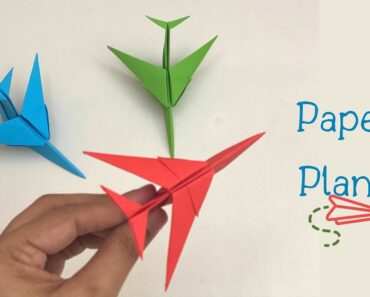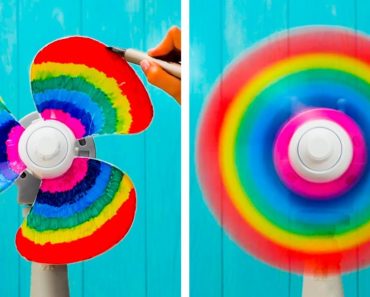The endocrine system includes glands that produce hormones in the body. Hormones coordinate complex body processes, such as metabolism and growth. They also play a role in the immune system functions and behavior of a person. Thus, the endocrine system controls several bodily functions through the regulation of hormones.
Read this post to know more about the functions and parts of the endocrine system and various endocrine disorders, their symptoms, and how to prevent them.
What Does The Endocrine System Do?
The main role of the endocrine system is to secrete hormones into the bloodstream. These hormones reach different body parts to regulate various functions. These functions include (1):
- Regulate metabolism
- Control growth and development
- Reproduction
- Control the mood
- Functions of various organs
- Regulate sleep patterns
What Are The Parts Of The Endocrine System?
The major glands in the endocrine system are (2):
1. Hypothalamus
Hypothalamus is located in the lower part of the brain and connects the endocrine system with the central nervous system through the pituitary gland. The nerve cells of the hypothalamus control the hormone release from the pituitary gland, which regulates the other endocrine glands’ hormone secretions.
The hypothalamus signals the production of pituitary hormones, based on the brain’s sensations, such as thirst, hunger, temperature, light exposure, and sleep. The following are the hormones released by the hypothalamus (3).
- Thyrotropin-releasing hormone (TRH) reaches the pituitary gland and stimulates the release of thyroid-stimulating hormone (TSH) and prolactin (PRL).
- Gonadotropin-releasing hormone (GnRH) primarily stimulates the release of follicle-stimulating hormone (FSH) and luteinizing hormone (LH). The secondary effects are increased release of estrogen and progesterone in females and testosterone in males.
- Growth hormone-releasing hormone (GHRH) signals the pituitary gland to release growth hormone (GH).
- Corticotropin-releasing hormone (CRH) signals pituitary cells to release corticotropin, also called adrenocorticotropic hormone (ACTH), to stimulate the release of adrenal hormones. This is also secreted by the placenta during pregnancy to prevent a maternal immune system attack on the fetus and determine the duration of gestation.
- Somatostatin is an inhibitory hormone that inhibits the release of growth hormone (GH) and thyroid-stimulating hormone (TSH) from the pituitary gland. This is also secreted in the pancreas and intestine, where it inhibits various digestive hormones.
- Dopamine is a hormone and neurotransmitter that inhibits the secretion of prolactin (PRL) from the pituitary gland. This also plays a role in activating brain reward centers and modulating the brain’s motor control centers. Dopamine secreting cells are also seen in other parts of the body that act locally.
2. Pituitary gland
The pituitary gland is located at the base of the brain. This pea-sized gland is the master gland of the endocrine system. Based on the hypothalamic signals, the pituitary gland sends inhibitory or stimulatory hormones to the other endocrine glands.
The following hormones are secreted by the anterior part of the pituitary gland (4).
- Growth hormone (somatotropin) stimulates growth, development, and metabolism of the body. It controls cell regeneration and also plays vital roles in the utilization of nutrients and minerals.
- Prolactin stimulates milk production in lactating women.
- Thyrotropin (thyroid-stimulating hormone) controls the production of thyroid hormones.
- Corticotropin (Adrenocorticotrophin or ACTH) stimulates the production of the adrenal hormones.
- Gonadotropins include FSH and LH. These hormones stimulate the production of reproductive cells and reproductive hormones, such as testosterone in males and estrogen in females.
The following hormones are directly released into the posterior pituitary from the hypothalamus.
- Vasopressin, also known as arginine vasopressin (AVP) or antidiuretic hormone (ADH), regulates osmotic balance, blood pressure, sodium hemostasis, and kidney functions in humans. Vasopressin acts on the kidneys to maintain water balance in the body.
- Oxytocin is a bonding hormone that enhances bonding, such as in the case of male and female or mother and newborn. This hormone increases a person’s trust in other people. Oxytocin also causes smooth muscle contractions, such as the uterus’ contraction during birth and release of milk when the baby suckles.
The pituitary also secretes hormones called endorphins and enkephalins, which block pain signals from the brainstem and spinal cord. Endorphins also play a role in immune system responses of the body.
Beta-melanocyte-stimulating hormone (melanotropin) stimulates melanin production by melanocytes in the skin and suppresses appetite by acting on the hypothalamus.
3. Thyroid gland
The thyroid gland is a butterfly or a bow-shaped gland located at the front of the lower neck. Triiodothyronine (T3) and thyroxine (T4) are hormones produced by the thyroid gland. Thyroid hormones play an essential role in metabolism, which is the energy production rate from food by body cells. High levels of thyroid hormones cause faster metabolism.
Parafollicular cells or C cells of the thyroid gland make a hormone called calcitonin, which controls calcium and phosphorus’s metabolism in the body. Calcitonin is also produced in other parts of the body, such as in the lungs and intestines. This hormone prevents osteoclast activity from digesting and releasing bone minerals (calcium and phosphorus) into the bloodstream and losing them through kidney excretion.
Thyroid hormones play a significant role in the growth and development of children. These hormones also influence general functions, such as body temperature and bone growth.
4. Parathyroid gland
Parathyroids are four small glands attached to the thyroid gland. They secrete parathyroid hormone (PTH), which regulates the levels of calcium in our body.
5. Adrenal glands
Adrenal glands, also called suprarenal glands, are triangle-shaped glands on top of the kidneys. These glands make several hormones from its outer part called the adrenal cortex, and the inner part called the adrenal medulla.
The following hormones are produced by the adrenal cortex.
- Cortisol (glucocorticoid hormone) controls the use of carbohydrates, proteins, and fats by the body. It regulates blood pressure, blood glucose, and decreases bone formation. Cortisol also helps in the suppression of inflammation in the body.
- Aldosterone (mineralocorticoid hormone) regulates blood pressure and blood pH levels. The hormone regulates electrolytes, such as sodium and potassium, in the blood to maintain blood pH.
- Androgenic steroids and DHEA help in the production of sex hormones.
Adrenaline (epinephrine) and noradrenaline (norepinephrine) are hormones produced by the adrenal medulla. These play a crucial role in stress response and regulate blood pressure and heart rate. They also function as neurotransmitters.
6. Pineal gland
The pineal gland, also called the pineal body, is a tiny pea-shaped endocrine gland located in the middle of the brain. It secretes the hormone melatonin that regulates the circadian rhythm (sleep pattern) in humans.
7. Reproductive glands
Reproductive glands are also called sex glands or gonads. These are mixed glands since they produce gametes (reproductive cells) and reproductive (sex) hormones. The male gonad produces hormones called androgens (male sex hormone). Testosterone is an important androgen that controls pubertal changes, such as growth and development of secondary sexual characteristics, including facial hair, pubic hair, and voice change.
Ovaries are female gonads located on either side of the uterus in the pelvis. Female hormones, such as estrogen and progesterone, are secreted by the ovaries. Estrogen regulates the secondary sexual characteristics in females, such as breast growth, fat deposit in the hip and thighs, and the growth spurt during puberty. Progesterone and estrogen together regulate the menstrual cycles and play a key role in pregnancy.
8. Pancreatic islets
The pancreas is a part of both the endocrine and digestive systems. The exocrine cells of the pancreas have digestive functions, whereas the pancreatic islet (islets of Langerhans) has endocrine functions.
The main hormones secreted by islets of Langerhans are:
- Insulin is produced by the pancreas’ beta cells. This hormone is involved in the metabolism of carbohydrates, proteins, and fat in the body. Insulin is made when blood sugar levels are high. It promotes glucose (sugar) absorption from the blood to the liver, fat and skeletal muscles.
- Glucagon is produced by alpha cells of pancreatic islets when blood glucose levels are low. This converts glycogen (glucose storage in the liver and muscles) and releases glucose into the bloodstream.
Somatostatin (growth hormone-inhibiting hormone), ghrelin (the hunger hormone), and pancreatic polypeptide (PP) are other hormones produced by the endocrine cells of the pancreas.
Problems Of The Endocrine System In Children
Too much or too little of any hormone can cause imbalances in the body functions. Injuries, autoimmune attacks, tumors, and infections are some of the conditions that could cause endocrine disorders. These disorders could also be a result of genetic factors or acquired factors, such as physical inactivity and an unhealthy diet.
Dysfunction of the hypothalamus or pituitary gland could impact overall endocrine functions in the body. Clinical manifestations may vary depending on the affected gland and the level of hormones made by it.
Although there are several endocrine disorders, children are most vulnerable to the following ones (5).
Signs And Symptoms Of Endocrine Problems
The following signs and symptoms could indicate endocrine problems in children (5).
- Frequent urination
- Constant weakness or lethargy
- Excess weight gain or loss
- Frequent nausea and belly pain
- Increased thirst
- Increased sweating
- Tremors (involuntary muscle contractions)
- Frequent constipation
- Delay in growth and development
Injuries or diseases of endocrine glands can cause various health conditions. Endocrine disorders due to reduction or lack of hormones require hormone replacement therapy (HRT) to relieve insufficiency symptoms. Excess secretion of hormones also requires medical treatment since this also affects the normal functioning of the body.
You may consult a pediatric endocrinologist if your child has symptoms of endocrine disorders.
How Can Chemicals Affect The Endocrine System?
Endocrine disruptors are chemicals that may mimic or interfere with human hormones. These chemicals can cause growth, reproductive, immune system, or brain issues in children. Endocrine-disrupting chemicals are found in several common products of daily use or generated during some activities (6).
| Endocrine disruptors | Sources |
| Bisphenol A (BPA) |
|
| Dioxins |
|
| Perchlorate |
|
| Perfluoroalkyl and Polyfluoroalkyl Substances (PFAS) |
|
| Triclosan |
|
| Polychlorinated biphenyls (PCB) |
|
| Polybrominated diphenyl ethers (PBDE) | |
| Phytoestrogens (genistein and daidzein) |
|
| Phthalates |
|
Children can come in contact with these chemicals through air, water, skin, or food. Even low doses of these chemicals are unsafe since it may cause biological effects. Avoid pollutants and keep chemicals away from the child’s reach. Pick non-toxic and child-safe toys, clothes, and other related products.
Tips For Healthy Endocrine System In Children
The following measures might help prevent endocrine problems in children.
- Regular medical follow-ups may help to identify hormonal imbalances before the symptoms develop.
- Early screening for children with a positive family history of endocrine issues, such as hypo or hyperthyroidism, and diabetes.
Lack or excess of hormones can interfere with the normal growth and development of the children. Seek medical care if you notice symptoms of hormonal imbalances in your child. Early hormone therapies may have better outcomes than delayed interventions. A healthy diet and regular exercise can help avoid some hormonal imbalances.

































